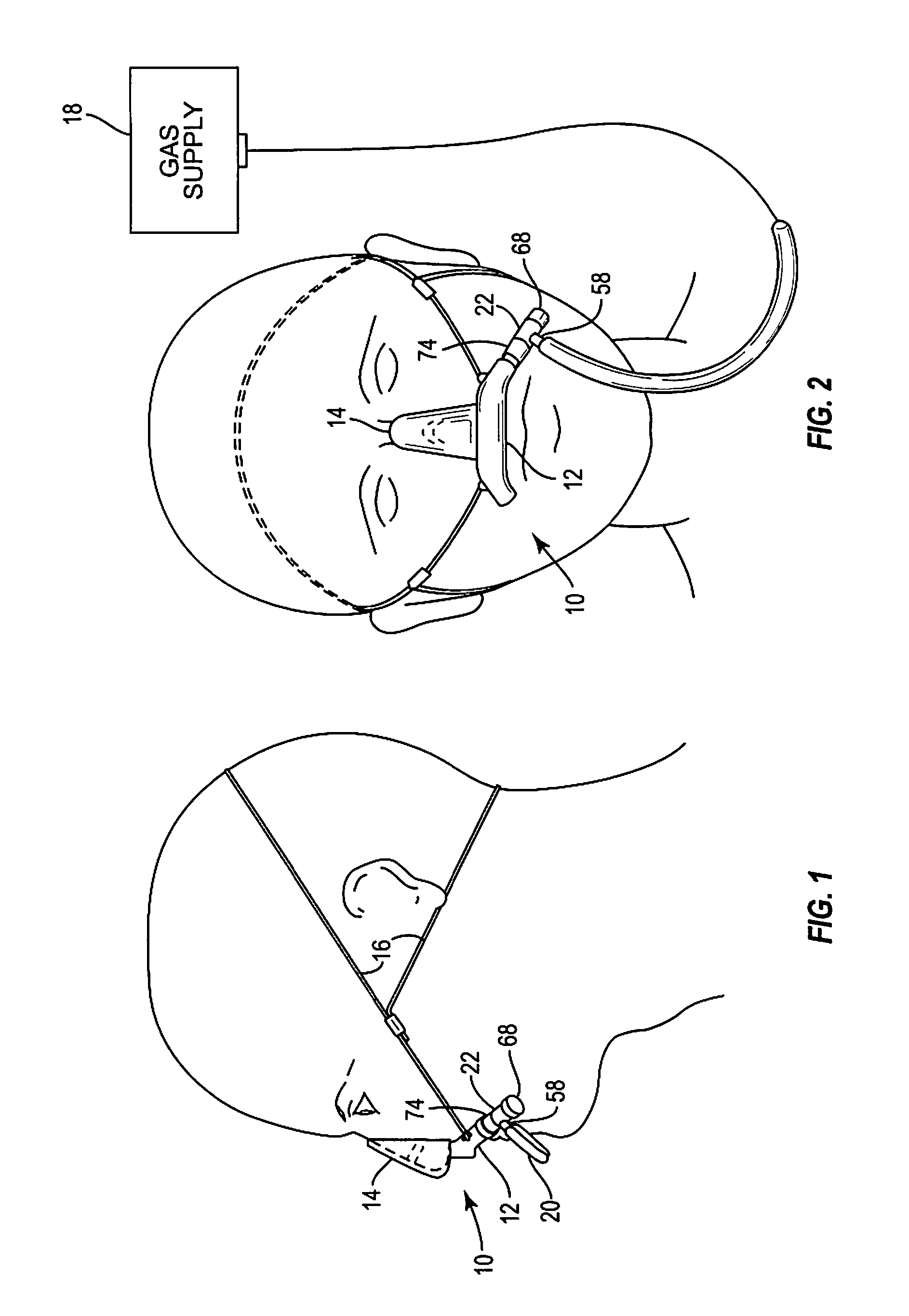Inhalation apparatus
a technology of inhalation apparatus and gas chamber, which is applied in the field of medical arts, can solve the problems of irritating and painful pressure of the gas impinging on the relatively sensitive nasal membrane, affecting the patient's condition, and causing irritation and pain
- Summary
- Abstract
- Description
- Claims
- Application Information
AI Technical Summary
Benefits of technology
Problems solved by technology
Method used
Image
Examples
Embodiment Construction
[0033]The exemplary embodiments of the inhalation device and methods of use disclosed are discussed in terms of medical apparatus and more particularly, in terms of fluid supply devices, such as oxygen and ambient air, and mixtures thereof that can be employed for inhalation by a subject patient. The inhalation device may be employed for treatment of subjects having conditions requiring increased levels of oxygen. It is envisioned that the present disclosure may be employed with a range of applications including cardiac disease, pulmonary disease and breathing disorders. It is further envisioned that the present disclosure may be used with other medical applications such as diagnosis, treatment and surgery.
[0034]The present invention may be understood more readily by reference to the following detailed description of the invention taken in connection with the accompanying drawing figures, which form a part of this disclosure. It is to be understood that this invention is not limited...
PUM
 Login to View More
Login to View More Abstract
Description
Claims
Application Information
 Login to View More
Login to View More - R&D
- Intellectual Property
- Life Sciences
- Materials
- Tech Scout
- Unparalleled Data Quality
- Higher Quality Content
- 60% Fewer Hallucinations
Browse by: Latest US Patents, China's latest patents, Technical Efficacy Thesaurus, Application Domain, Technology Topic, Popular Technical Reports.
© 2025 PatSnap. All rights reserved.Legal|Privacy policy|Modern Slavery Act Transparency Statement|Sitemap|About US| Contact US: help@patsnap.com



